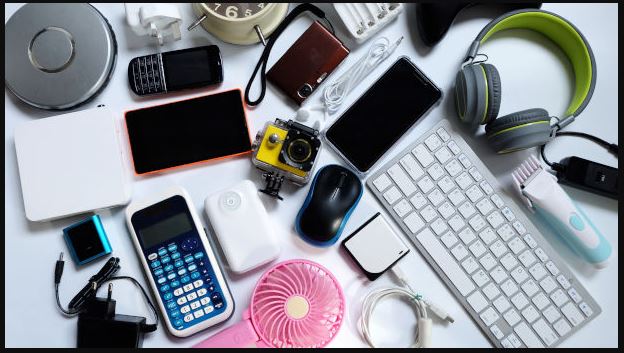Electrical and electronic equipment (EEE) are integral to construction and industrial work. However, these devices often contain hazardous substances that pose significant risks to workers’ safety and overall well-being. Toxic components can be released during mishandling or improper disposal, creating dangers for those working with or around such equipment.
Understanding these potential hazards is crucial to maintaining a safe working environment for worker’s safety and well-being. This blog explores hazardous substances in EEE, the risks they pose, relevant UK regulations and essential safety practices to mitigate these dangers.
Identifying Risks in Electrical Equipment
Electrical and Electronic Equipment (EEE) can pose significant risks if mishandled, as it often contains hazardous substances. These materials can be harmful to workers during repairs, dismantling, or damage to appliances. Common examples include:
- Lead in solder and glass components, which can cause neurological damage.
- Mercury in switches and relays, posing risks to the nervous system.
- Cadmium in batteries and plastics, a known carcinogen.
- Brominated flame retardants in circuit boards, which can disrupt hormone systems.
When appliances are damaged or mishandled, these substances may be released into the air or onto surfaces, creating immediate and long-term health risks. For example, a frayed cable or a malfunctioning appliance can lead to electrical hazards, exposing workers to potential injuries and contamination.
To mitigate these risks, workers need a clear understanding of how to identify and handle electrical hazards. Training plays a crucial role in this process. Portable appliance testing training provides workers with the knowledge to inspect and test equipment for electrical safety, ensuring faults are detected early. This training also teaches proper use of protective equipment and the steps needed to report hazards effectively.
Health Hazards Linked to EEE
Exposure to hazardous substances in EEE can have severe health implications:
- Respiratory issues from inhaling fumes or dust during repairs or recycling.
- Neurological damage caused by prolonged exposure to lead or mercury.
- Cancer risks from carcinogenic materials like cadmium.
Industrial and construction workers face heightened risks when dismantling or recycling EEE, as these processes often involve direct exposure to hazardous components. Simple activities such as breaking a fluorescent lamp can release mercury vapours, putting workers at risk.
Safe working practices, including proper handling and regular training, are critical to minimising these risks. Employers and workers alike must prioritise awareness of the dangers and adhere to safety protocols.
Impact of Improper Disposal
Improper disposal of EEE has dire consequences for both the environment and worker safety. Toxic substances can absorbed by soil and water, contaminating ecosystems and endangering communities. For construction and industrial workers, this creates additional hazards when working on contaminated sites.
The UK’s Waste Electrical and Electronic Equipment (WEEE) Directive enforces the proper disposal and recycling of EEE. This regulation aims to minimise the environmental impact of hazardous substances and protect workers from unnecessary exposure. Adhering to these standards ensures legal compliance and reduces risks for those handling electrical waste.
Regulations and Standards for Worker Safety
Worker safety is a legal priority in the UK, governed by regulations designed to address the risks of hazardous substances. Key regulations include:
- The Health and Safety at Work Act 1974 obliges employers to provide safe working conditions.
- The Control of Substances Hazardous to Health (COSHH) Regulations 2002 outline how to manage and minimise exposure to hazardous substances.
These regulations and standards help organisations enforce measures that ensure safe working conditions and the availability of precautionary equipment and procedures to minimise exposure to hazardous substances.
Therefore, employers must assess risks, implement control measures and provide workers with adequate training. Enrolling in IIRSM-approved training programmes and obtaining a COSHH training certificate can equip workers with the knowledge to handle hazardous substances safely, including those found in EEE.
Preventative Measures in the Workplace
Prevention is key to reducing exposure to hazardous substances in electrical and electronic equipment (EEE). Employers and workers should adopt the following measures:
- Use personal protective equipment (PPE): PPE, such as gloves, masks and safety goggles, provides protection and reduces the risk of direct exposure to toxic substances like lead and mercury during handling or dismantling activities.
- Implement safe handling and storage practices: Proper storage conditions, such as keeping EEE in designated areas and avoiding overcrowding, prevent physical damage that could release hazardous materials. Safe handling, including using tools designed for disassembly, minimises risks during use or disposal.
- Regularly inspect and test equipment: Scheduled inspections and testingcan identify faults or damage early. This reduces the likelihood of hazardous substances being released unexpectedly.
- Train workers to recognise and manage risks: Up-to-date knowledge on identifying risks associated with EEE, including understanding warning labels and handling instructions, equips workers to act swiftly and safely in hazardous situations.
Encouraging a culture of safety and employee well-being within the workplace is essential. Workers should feel empowered to report potential hazards and seek guidance on best practices. By fostering a proactive approach, employers can significantly reduce the risks associated with EEE.
Conclusion
Toxic substances found in electrical and electronic equipment are a significant concern for construction and industrial workers. The risks posed by lead, mercury and other poisonous materials require careful management and adherence to safety protocols.
UK regulations, such as COSHH Regulations, provide a robust framework for protecting workers and the environment. By prioritising compliance and adopting preventative measures, workplaces can minimise exposure to hazardous substances, creating a safer environment for all.




